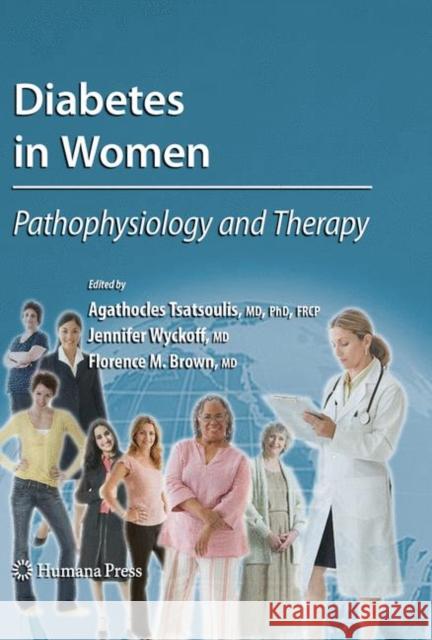Diabetes in Women: Pathophysiology and Therapy » książka
Diabetes in Women: Pathophysiology and Therapy
ISBN-13: 9781617796524 / Angielski / Miękka / 2012 / 464 str.
This book is devoted to women with diabetes. The primary aim is to provide cutting edge knowledge pertaining to diabetes in women from conception to menopause and beyond. The whole notion of the book arises from the understanding that there is a complex interplay between gender and diabetes. Gender differences may differentially affect energy metabolism, body composition and cardiovascular risk and therefore the pathophysiology and clinical burden of diabetes in women. Events in the reproductive lifecycle of women cause both special treatment considerations for diabetes and pose unique risks from diabetes. For example, during pregnancy, an adverse intrauterine environment may program fetal metabolism towards the development of cardiometabolic disease and diabetes in adult life. On the other hand, maternal diabetes may influence fetal development and postnatal outcome. The beneficial effects of endogenous sex steroids during reproductive age appear to be lost in women with diabetes, and the withdrawal of estrogens after the menopause may increase cardiovascular risk. Finally, gender has certain psychological, social and cultural dimensions, which may affect a person's risk for and ability to treat diabetes. This book aims to explore the spectrum of issues specific to diabetes in women. The book is designed for generalists, physicians with an interest in diabetes, endocrinologists, obstetricians and gynecologists, and those training in these areas of health care. It is hoped that the topics in the book will help improve the knowledge of diabetes in women.
This book is devoted to women with diabetes. The primary aim is to provide cutting edge knowledge pertaining to diabetes in women from conception to menopause and beyond. §The whole notion of the book arises from the understanding that there is a complex interplay between gender and diabetes. Gender differences may differentially affect energy metabolism, body composition and cardiovascular risk and therefore the pathophysiology and clinical burden of diabetes in women. §Events in the reproductive lifecycle of women cause both special treatment considerations for diabetes and pose unique risks from diabetes. For example, during pregnancy, an adverse intrauterine environment may program fetal metabolism towards the development of cardiometabolic disease and diabetes in adult life. On the other hand, maternal diabetes may influence fetal development and postnatal outcome. §The beneficial effects of endogenous sex steroids during reproductive age appear to be lost in women with diabetes, and the withdrawal of estrogens after the menopause may increase cardiovascular risk. §Finally, gender has certain psychological, social and cultural dimensions, which may affect a person s risk for and ability to treat diabetes. This book aims to explore the spectrum of issues specific to diabetes in women.§The book is designed for generalists, physicians with an interest in diabetes, endocrinologists, obstetricians and gynecologists, and those training in these areas of health care. It is hoped that the topics in the book will help improve the knowledge of diabetes in women.











